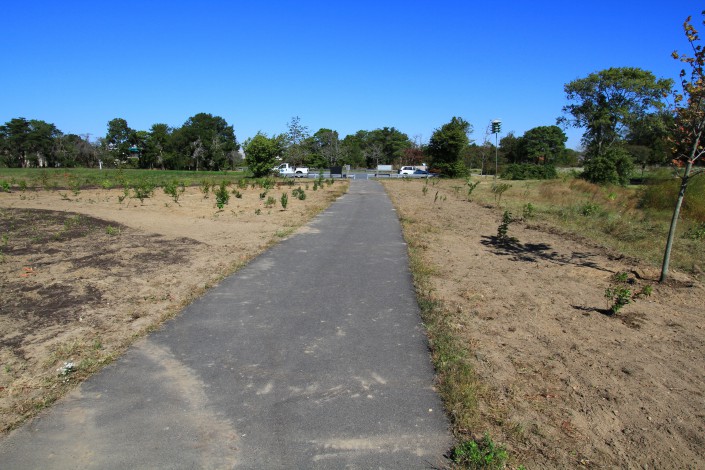Ponderlodge: Before/After
It’s been several years since the old Ponderlodge Golf Course was purchased by the Green Acres Program. After being slated for use as a satellite campus for Stockton College the old lodge and other buildings are long gone from the site. Today, the site is managed for wildlife and outdoor recreation. The old paved cart paths make it a magnet for local residents to easily explore it’s features. We’re delighted to be working with NJ Fish & Wildlife to enhance the habitat on site. This past week we planted over 2,700 native species in an area we call the “Backyard Habitat Demonstration Site.” It’s in an area where the old lodge used to be located. The purpose of the site is for visitors to learn about features they themselves can install in their own backyards to benefit wildlife. We have 6 main features: Forested habitat, Scrub-shrub, Wildflower meadow, Pond (not yet installed), Nectar producing plants, and a brush pile. The features will be highlighted by interpretive signs and we hope to get volunteers to help maintain the site in the future.



Discover more from Conserve Wildlife Foundation of NJ
Subscribe to get the latest posts sent to your email.